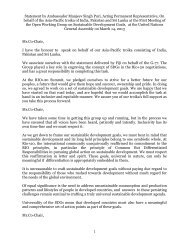STATE OF THE WORLD'S CITIES 2012/2013 Prosperity
STATE OF THE WORLD'S CITIES 2012/2013 Prosperity
STATE OF THE WORLD'S CITIES 2012/2013 Prosperity
You also want an ePaper? Increase the reach of your titles
YUMPU automatically turns print PDFs into web optimized ePapers that Google loves.
State of the World’s Cities <strong>2012</strong>/<strong>2013</strong><br />
This driving power behind urban change and transformation<br />
acts as the ‘hub’ at the centre of the ‘wheel of prosperity’.<br />
Urban power functions are where the public, collective<br />
interest is determined, together with the practical rules,<br />
plans and actions that are to embed it in a specific area. The<br />
hub is where decisions are made to activate any of the five<br />
dimensions of prosperity, keeping them well-balanced and<br />
maintaining the momentum in the wheel.<br />
Part 2 of this Report detailed the respective roles of<br />
the five dimensions of urban prosperity, with the various<br />
interlinkages and multipliers involved. Part 3 presents the<br />
policy related factors underlying the prosperity of cities,<br />
including drivers and constraints. It also focuses on urban<br />
power functions – the ‘hub’ holding together, activating<br />
and controlling the five ‘spokes’ of the ‘wheel of prosperity’<br />
across the length and breadth of any urban jurisdiction,<br />
regardless of geographic location, size or resources. Just<br />
like productivity, infrastructure or a well-preserved natural<br />
environment, these urban power functions are human<br />
constructs; it is for governments, local and municipal<br />
authorities, and society at large to make sure that these<br />
power functions work for the benefit of the majority of the<br />
population and keep enhancing shared urban prosperity.<br />
Policy-Related Factors<br />
Underlying the <strong>Prosperity</strong><br />
of Cities<br />
The policy-related factors underlying the prosperity of<br />
cities are multifaceted. They can be described in terms<br />
of drivers and constraints. The drivers could be the<br />
traditional and non-conventional factors that create an<br />
environment conducive to prosperity; they often affect the<br />
prosperity of cities in a positive manner. The constraints<br />
act as impediments that prevent a city from becoming<br />
more prosperous. These<br />
factors are further<br />
Effective urban mediated by the local<br />
FACT planning and<br />
context, and as such, their<br />
management is perceived<br />
effects may vary across<br />
to be the most important<br />
driver creating a favourable cities and regions – a<br />
environment for the<br />
particular factor might be<br />
prosperity of cities.<br />
important in one city or<br />
region, but not in another.<br />
92<br />
Actualizing dreams of prosperity: penthouse in El Alto, Bolivia.<br />
© Eduardo Lopez Moreno<br />
FACTORS CREATING AN ENvIRONMENT<br />
CONDUCIvE FOR <strong>THE</strong> PROSPERITy <strong>OF</strong> <strong>CITIES</strong><br />
According to the local experts surveyed by UN-Habitat,<br />
the factors that create a favourable environment for cities<br />
to prosper are effective urban planning and management;<br />
decentralization polices and appropriate institutions; a<br />
system that creates equal opportunities for all; participation<br />
of civil society; elected local officials; a favourable business<br />
environment; access to basic amenities; and public transport<br />
and mobility. Most of these factors are interrelated or<br />
complementary and jointly affect the prosperity of cities.<br />
The importance of these factors with respect to the various<br />
regions is presented in Figure 3.1.1.<br />
Effective urban planning and management<br />
The perceived importance of urban planning is most<br />
pronounced in the Arab States followed by Africa and Asia.<br />
However, in Latin America<br />
and the Caribbean, urban<br />
planning emerges as the<br />
third most important factor<br />
that creates an environment<br />
conducive for cities to<br />
prosper.s<br />
POLICy<br />
As a starting<br />
point,<br />
urban planners must<br />
view urbanization as a<br />
positive phenomenon.


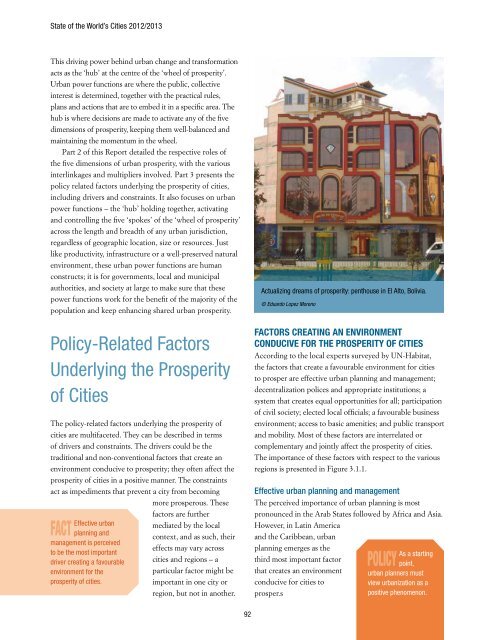

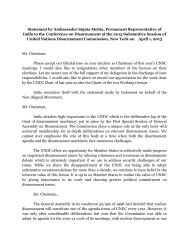
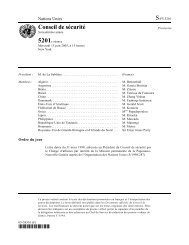
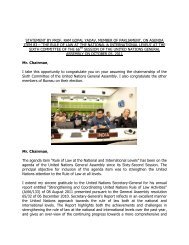
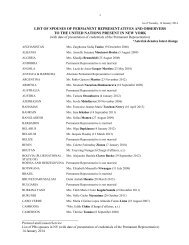
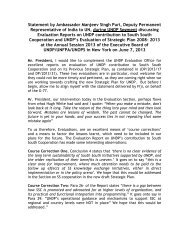
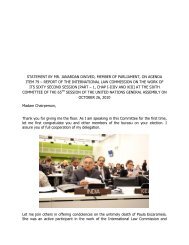
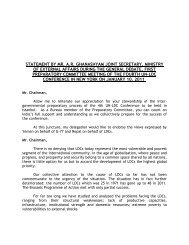
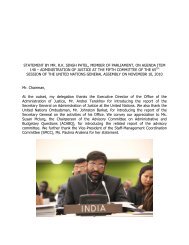

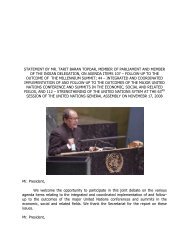
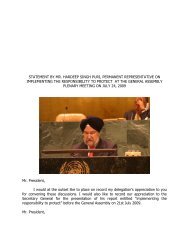
![1 statement by dr.[mrs] kakoli ghosh dastidar - Member States Portal](https://img.yumpu.com/27526598/1/190x245/1-statement-by-drmrs-kakoli-ghosh-dastidar-member-states-portal.jpg?quality=85)
